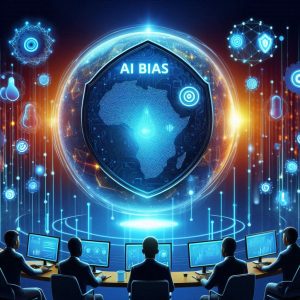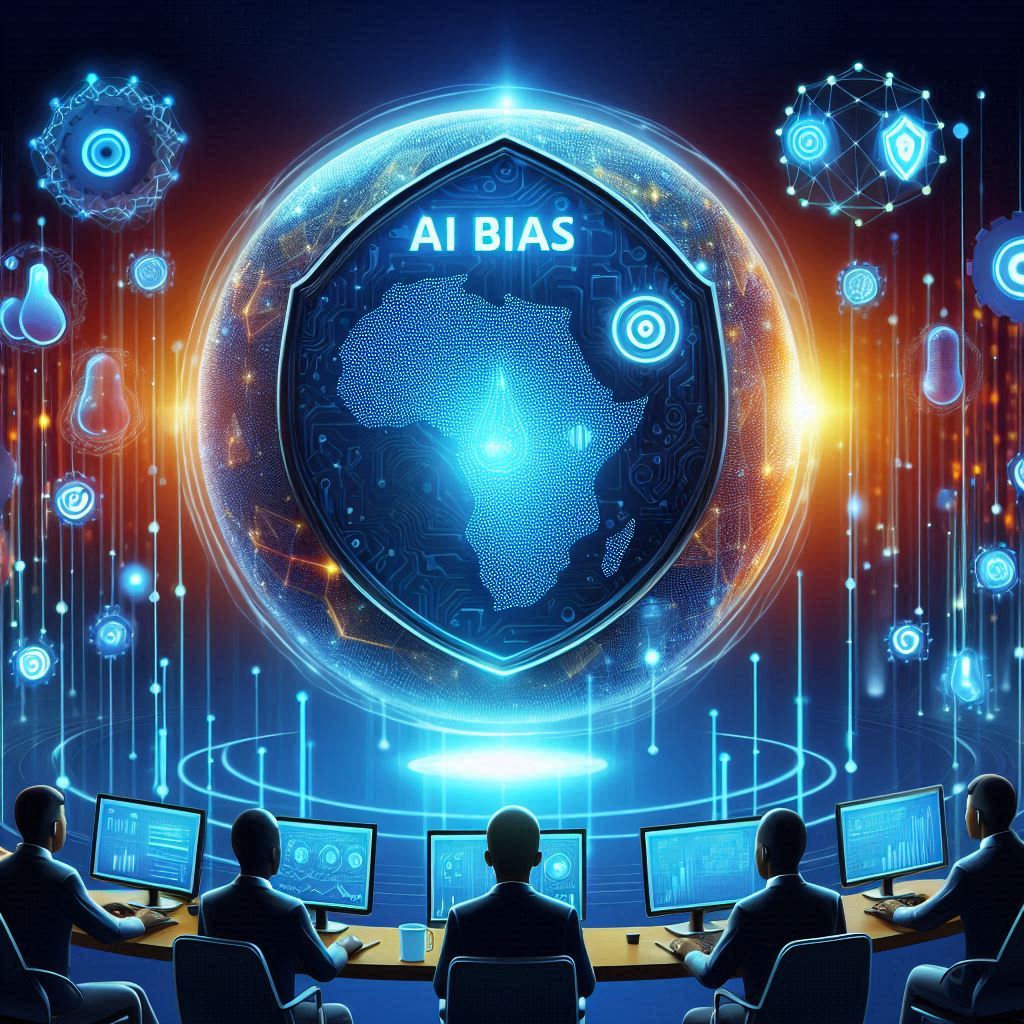Unveiling AI Bias Understanding its Impact and Mitigation Strategies
Introduction
Understanding AI Bias
AI bias arises when algorithms reflect the prejudices present in their training data or the subjective choices of their developers. These biases can manifest in several forms, including racial, gender, and socioeconomic biases. For instance, facial recognition systems have been found to exhibit higher error rates for individuals with darker skin tones compared to those with lighter skin tones.
Types of AI Bias
| Type of Bias | Description | Examples |
|---|---|---|
| Data Bias | Occurs when the training data is not representative of the real-world population. | Facial recognition systems trained on predominantly white faces. |
| Algorithmic Bias | Results from the design and implementation choices made by developers. | Job recruitment algorithms favoring male candidates. |
| User Interaction Bias | Emerges from the way users interact with AI systems. | Search engines reinforcing popular but biased queries. |
Impact of AI Bias
The consequences of AI bias can be far-reaching and detrimental. Some key impacts include:
- Discrimination: AI systems can perpetuate and amplify societal biases, leading to unfair treatment of certain groups.
- Loss of Trust: Biased AI systems can erode public trust in technology and institutions that deploy them.
- Inequality: Biased AI can exacerbate existing inequalities, particularly in areas like healthcare, finance, and criminal justice.
Mitigation Strategies
Addressing AI bias requires a multifaceted approach involving technological, ethical, and regulatory measures. Here are some effective strategies:
1. Diverse and Representative Data
Ensuring that training data is diverse and representative of the target population is crucial. Techniques such as data augmentation and synthetic data generation can help achieve this.
2. Algorithmic Transparency
Implementing transparency mechanisms allows stakeholders to understand how AI systems make decisions. Explainable AI (XAI) techniques can make AI models more interpretable and accountable.
3. Bias Audits and Testing
Regularly auditing AI systems for biases and conducting rigorous testing can identify and mitigate potential issues before deployment. Independent oversight bodies can also play a role in this process.
4. Ethical AI Frameworks
Developing and adhering to ethical AI frameworks ensures that AI development aligns with societal values and norms. Organizations can adopt guidelines from reputable sources such as the OECD AI Principles.
Success Stories and Exemplary Cases
Several organizations have made significant strides in addressing AI bias, serving as exemplars for the industry:
Microsoft: Microsoft has developed comprehensive guidelines for responsible AI, emphasizing fairness, accountability, and transparency.
Google: Google has implemented AI fairness principles and launched tools like What-If Tool to help developers identify and mitigate biases in their models.
IBM: IBM’s AI Fairness 360 toolkit provides open-source resources to detect and mitigate biases in machine learning models.
Future Directions
As AI technology continues to evolve, ongoing efforts to address bias will be essential. Future directions include:
- Interdisciplinary Collaboration: Collaboration between technologists, ethicists, and policymakers to develop holistic solutions.
- Continual Learning: Developing AI systems capable of continuous learning and adaptation to minimize bias over time.
- Global Standards: Establishing international standards and regulations to ensure consistent and fair AI practices worldwide.
Conclusion
Addressing AI bias is not only a technological challenge but also a moral imperative. By understanding its impact and implementing effective mitigation strategies, we can harness the full potential of AI while ensuring fairness and equity for all. The journey towards unbiased AI is ongoing, and it requires the collective effort of researchers, developers, and policymakers to create a more inclusive and just technological future

Unveiling AI Bias Understanding its Impact and Mitigation Strategies
Unveiling AI Bias: Understanding its Impact and Mitigation Strategies – Pros and Cons
Introduction
Artificial Intelligence (AI) is a powerful tool that has the potential to revolutionize many aspects of our lives. However, like any tool, it has both advantages and disadvantages. Understanding the pros and cons of AI, especially concerning AI bias, is crucial for leveraging its benefits while mitigating its risks.
Pros of AI
1. Increased Efficiency and Productivity
AI can process vast amounts of data quickly and accurately, leading to significant improvements in efficiency and productivity. For instance, in the healthcare sector, AI can analyze medical images faster than human doctors, aiding in quicker diagnoses.
2. Enhanced Decision-Making
AI systems can analyze data and identify patterns that humans might miss. This capability can enhance decision-making processes in various fields, from finance to logistics, by providing more accurate and data-driven insights.
3. Automation of Repetitive Tasks
AI can automate mundane and repetitive tasks, freeing up human workers to focus on more complex and creative endeavors. This automation can lead to cost savings and improved job satisfaction.
4. Advancements in Personalized Services
AI enables the personalization of services and products. For example, recommendation algorithms on streaming platforms like Netflix and Spotify provide users with tailored content, enhancing their experience.
Cons of AI
1. AI Bias and Discrimination
One of the most significant drawbacks of AI is the potential for bias and discrimination. AI systems trained on biased data can perpetuate and even amplify existing prejudices, leading to unfair treatment of certain groups. For example, AI-driven hiring tools may favor male candidates over equally qualified female candidates due to biased training data.
2. Lack of Transparency
Many AI systems operate as “black boxes,” meaning their decision-making processes are not transparent. This lack of transparency can make it difficult to understand how and why certain decisions are made, leading to trust issues and accountability problems.
3. Job Displacement
While AI can create new job opportunities, it can also lead to job displacement, particularly in industries that rely heavily on routine tasks. Workers in such industries may face significant challenges in adapting to new roles that require different skill sets.
4. Ethical and Privacy Concerns
The use of AI raises various ethical and privacy concerns. For instance, the deployment of facial recognition technology can lead to invasions of privacy and surveillance issues. Additionally, ethical dilemmas arise when AI systems make decisions that impact human lives, such as in autonomous driving or medical diagnostics.
Balancing the Pros and Cons
To leverage the benefits of AI while mitigating its risks, a balanced approach is necessary. Here are some strategies to achieve this balance:
1. Implementing Ethical AI Guidelines
Developing and adhering to ethical AI guidelines can help ensure that AI systems are designed and deployed responsibly. Organizations can follow frameworks from reputable sources such as the OECD AI Principles and the Google AI Fairness Principles.
2. Ensuring Transparency and Accountability
Transparency in AI systems can be achieved through explainable AI (XAI) techniques, which make AI models more interpretable and accountable. Additionally, regular audits and assessments can ensure that AI systems adhere to ethical standards.
3. Promoting Diversity in AI Development
Promoting diversity in AI development teams and training data can help mitigate bias. Diverse teams are more likely to identify and address potential biases, leading to fairer AI systems.
4. Fostering Collaboration
Collaboration between technologists, ethicists, policymakers, and other stakeholders is essential for addressing the complex challenges posed by AI. Such collaboration can lead to holistic solutions that balance innovation with ethical considerations.
Conclusion
AI has the potential to drive significant advancements across various fields, but it also poses risks, particularly concerning bias and ethical concerns. By understanding the pros and cons of AI and implementing strategies to mitigate its risks, we can harness its potential while ensuring fairness and equity. The journey towards responsible AI is ongoing and requires the collective effort of all stakeholders to create a more inclusive and just technological future
Unveiling AI Bias: Understanding its Impact and Mitigation Strategies – Disclaimer and Caution
Disclaimer
The information provided in this article is for general informational purposes only. All information in this article is provided in good faith; however, we make no representation or warranty of any kind, express or implied, regarding the accuracy, adequacy, validity, reliability, availability, or completeness of any information in this article. Under no circumstance shall we have any liability to you for any loss or damage of any kind incurred as a result of the use of the article or reliance on any information provided in the article. Your use of the article and your reliance on any information in the article is solely at your own risk.
Caution
Artificial Intelligence and AI Bias
While AI technology offers numerous benefits and transformative potential, it also poses significant challenges, particularly concerning bias and ethical implications. AI bias can lead to unfair and discriminatory outcomes that may have far-reaching consequences. It is crucial to approach AI development and deployment with caution, ensuring that ethical considerations are at the forefront.
Potential Risks of AI Bias
- Discrimination: AI systems can unintentionally discriminate against certain groups, perpetuating existing inequalities and creating new forms of bias.
- Privacy Concerns: AI applications, such as facial recognition, can lead to invasions of privacy and unauthorized surveillance.
- Transparency and Accountability: Many AI models operate as black boxes, making it difficult to understand their decision-making processes and hold them accountable.
- Ethical Dilemmas: The deployment of AI in sensitive areas, such as healthcare and criminal justice, raises ethical questions about the fairness and morality of automated decisions.
Mitigation Strategies
Addressing AI bias requires a multifaceted approach, including:
- Diverse and Representative Data: Ensuring that AI systems are trained on diverse and representative datasets to minimize bias.
- Transparency Mechanisms: Implementing explainable AI (XAI) techniques to make AI models more transparent and understandable.
- Regular Audits: Conducting regular audits and assessments to identify and mitigate biases in AI systems.
- Ethical AI Guidelines: Adhering to ethical AI guidelines and principles to ensure responsible AI development and deployment.
- Interdisciplinary Collaboration: Encouraging collaboration between technologists, ethicists, policymakers, and other stakeholders to address the complex challenges posed by AI bias.
Importance of Human Oversight
Human oversight is crucial in the development and deployment of AI systems. While AI can assist in decision-making, it should not replace human judgment entirely. Ensuring that humans remain in the loop can help mitigate the risks associated with AI bias and enhance accountability.
Legal and Regulatory Frameworks
Establishing robust legal and regulatory frameworks is essential for governing the use of AI. Policymakers should work towards creating standards and regulations that promote fairness, transparency, and accountability in AI systems. This includes addressing issues related to data privacy, algorithmic transparency, and ethical considerations.
Public Awareness and Education
Raising public awareness about AI bias and its potential impact is crucial. Educating users, developers, and policymakers about the risks and mitigation strategies can help foster a more informed and responsible approach to AI. This includes promoting literacy in AI and its ethical implications.
Continuous Improvement and Adaptation
The field of AI is rapidly evolving, and addressing AI bias is an ongoing challenge. Continuous improvement and adaptation of AI systems are necessary to ensure that they remain fair and unbiased. This includes updating training data, refining algorithms, and staying informed about the latest research and best practices in AI ethics.
Final Thoughts
While AI has the potential to drive significant advancements and improve various aspects of our lives, it also poses risks that must be carefully managed. Understanding the limitations and challenges of AI, particularly concerning bias, is essential for responsible AI development and deployment. By adopting a cautious and informed approach, we can harness the benefits of AI while mitigating its risks, ensuring that AI serves as a tool for positive change and equity.


[…] Ongoing monitoring and evaluation of AI systems will be necessary to identify and mitigate any emerging biases or ethical issues. […]
[…] Leveraging AI for predictive marketing offers numerous benefits, including enhanced personalization, improved customer insights, increased efficiency, and better ROI. However, it also presents challenges such as data privacy concerns, data quality issues, high implementation costs, and ethical considerations. By understanding and addressing these pros and cons, businesses can make informed decisions about integrating AI into their marketing strategies, maximizing the advantages while mitigating the risks. […]